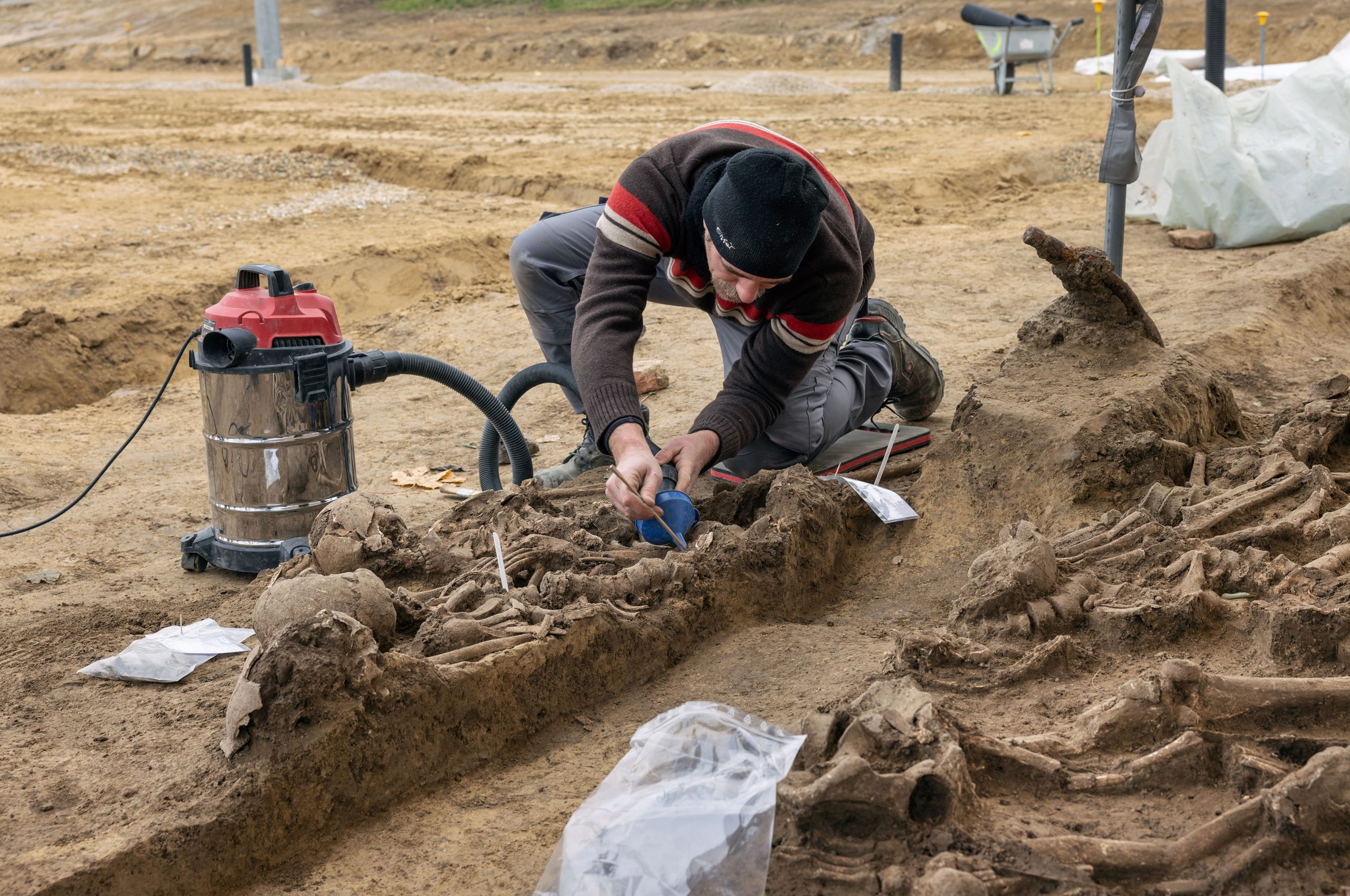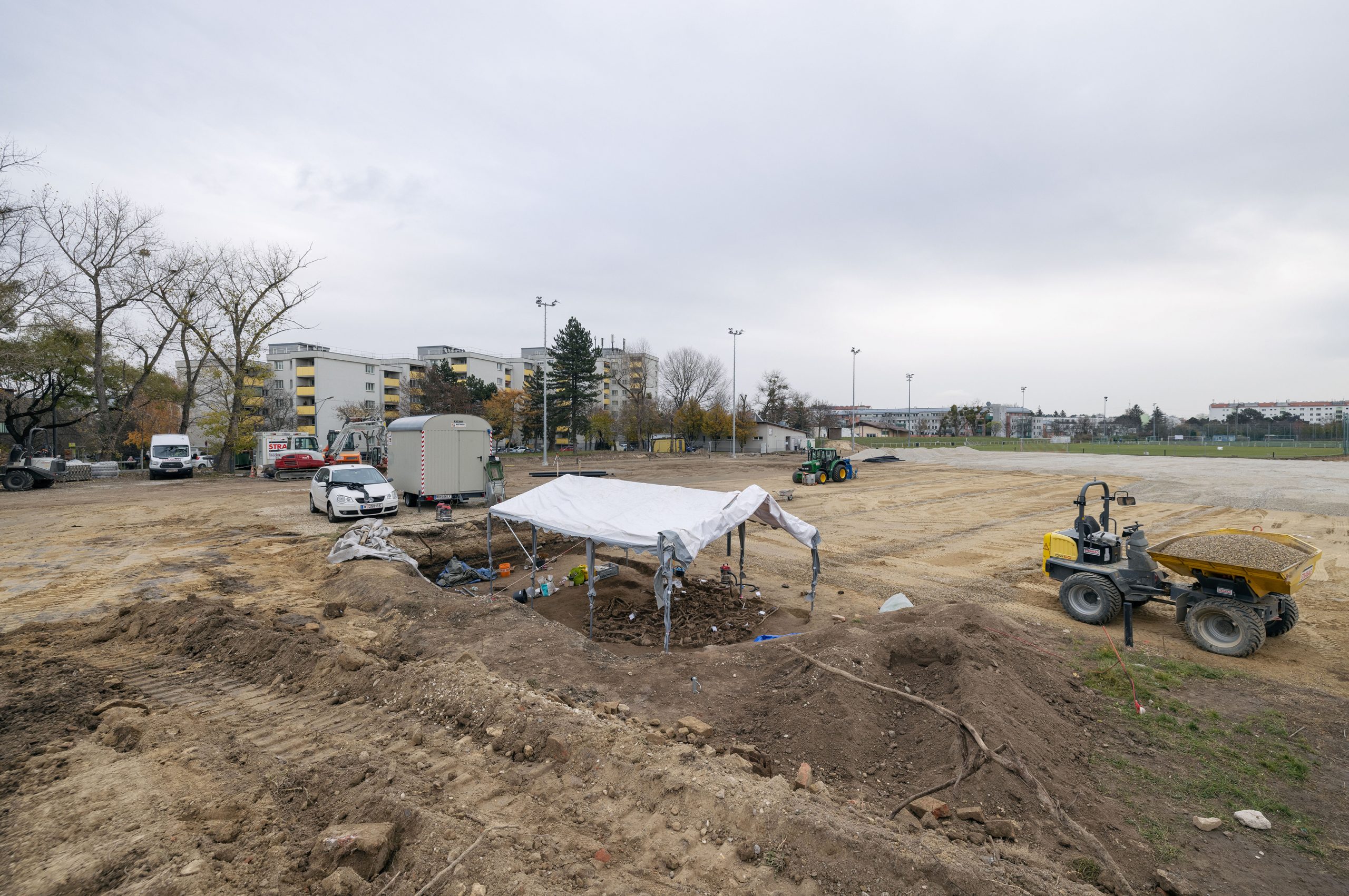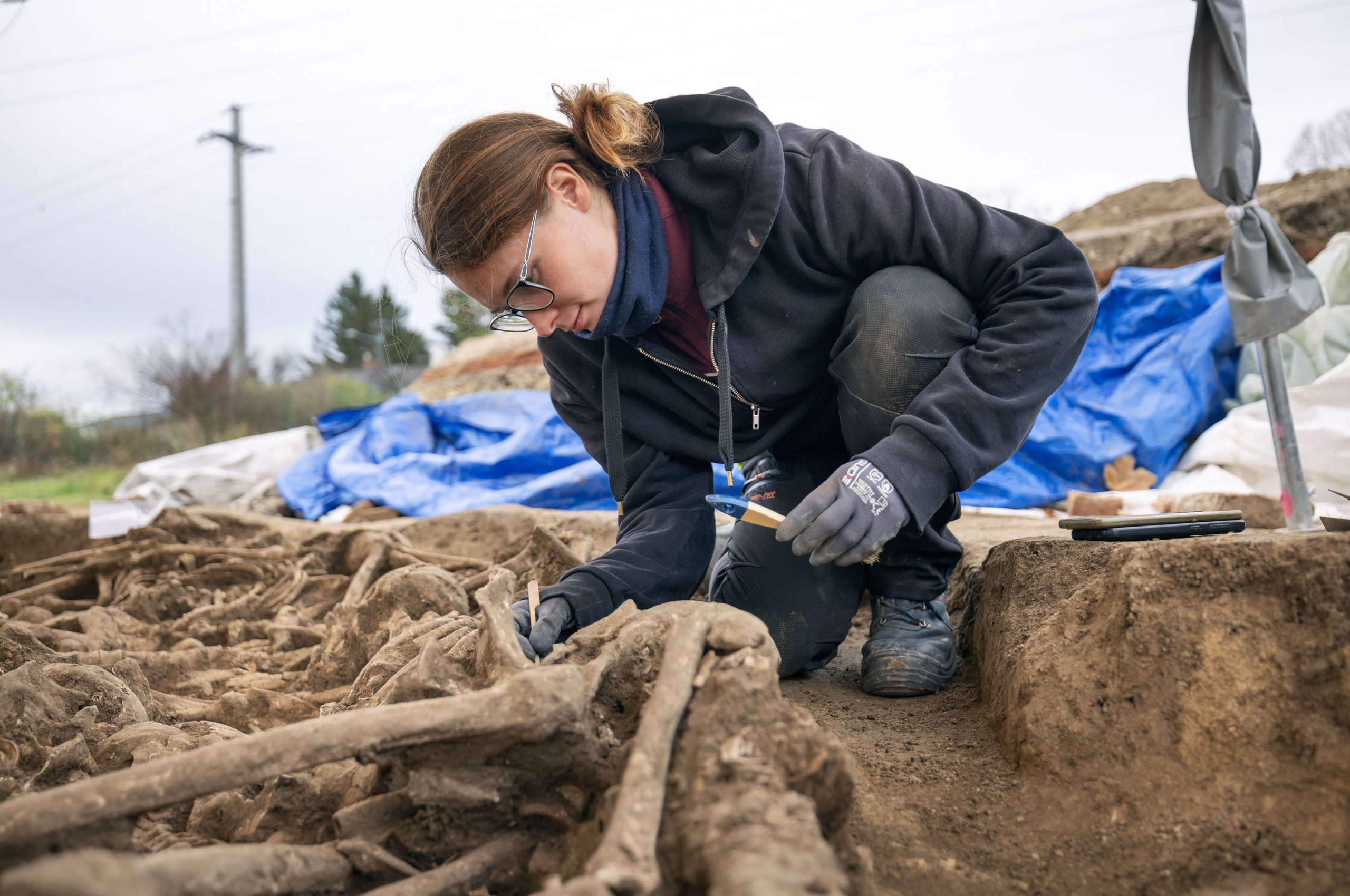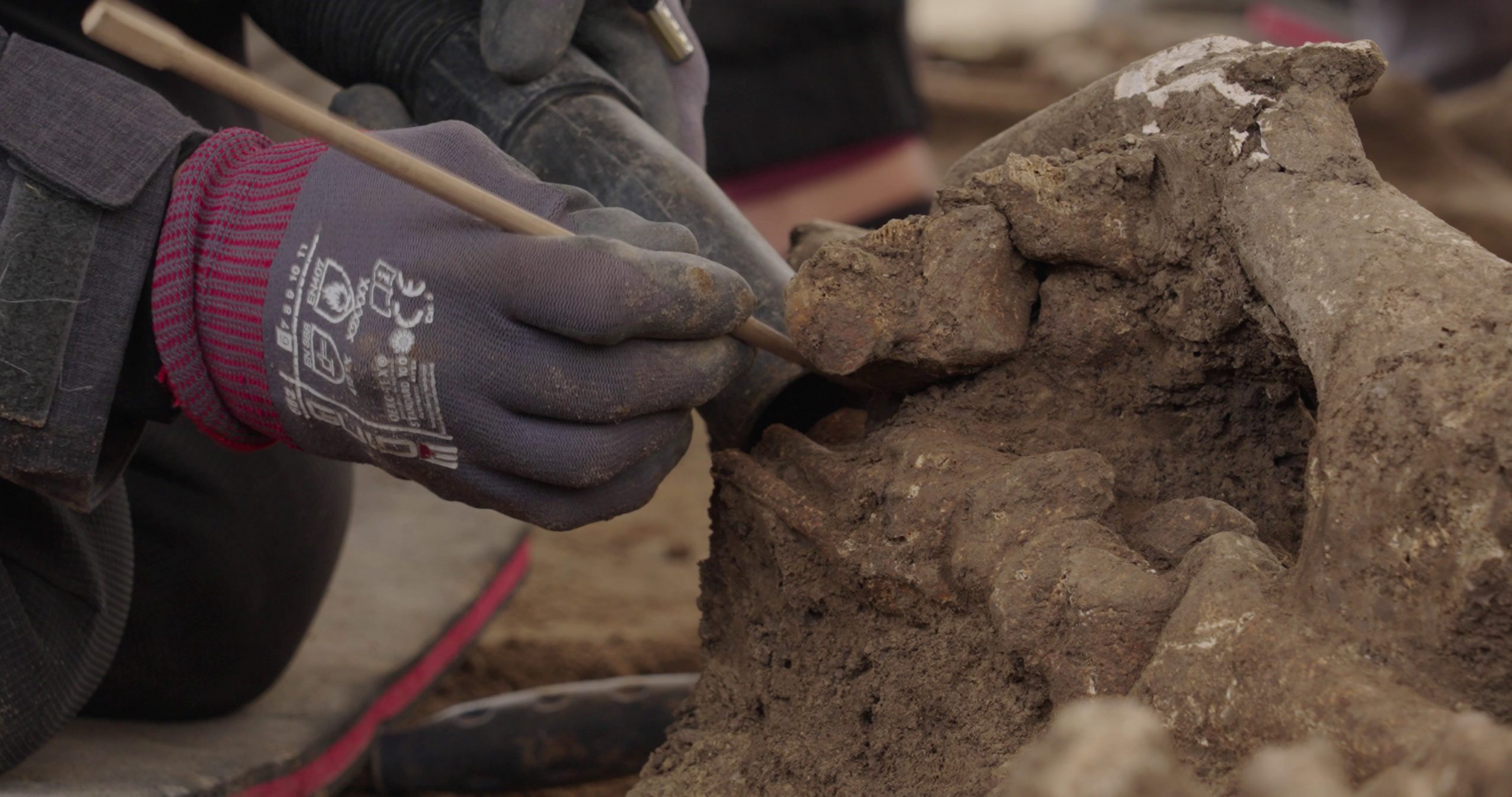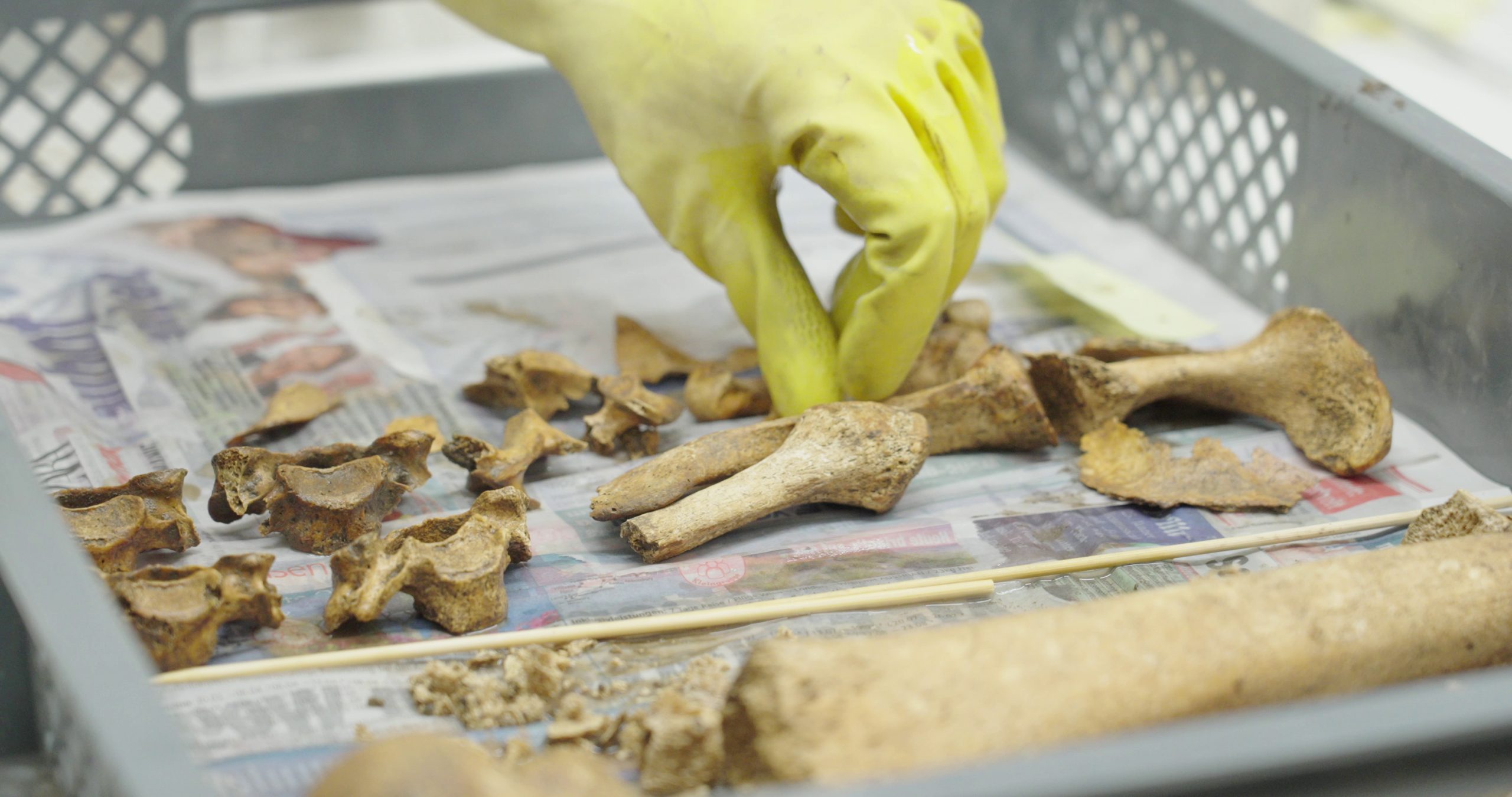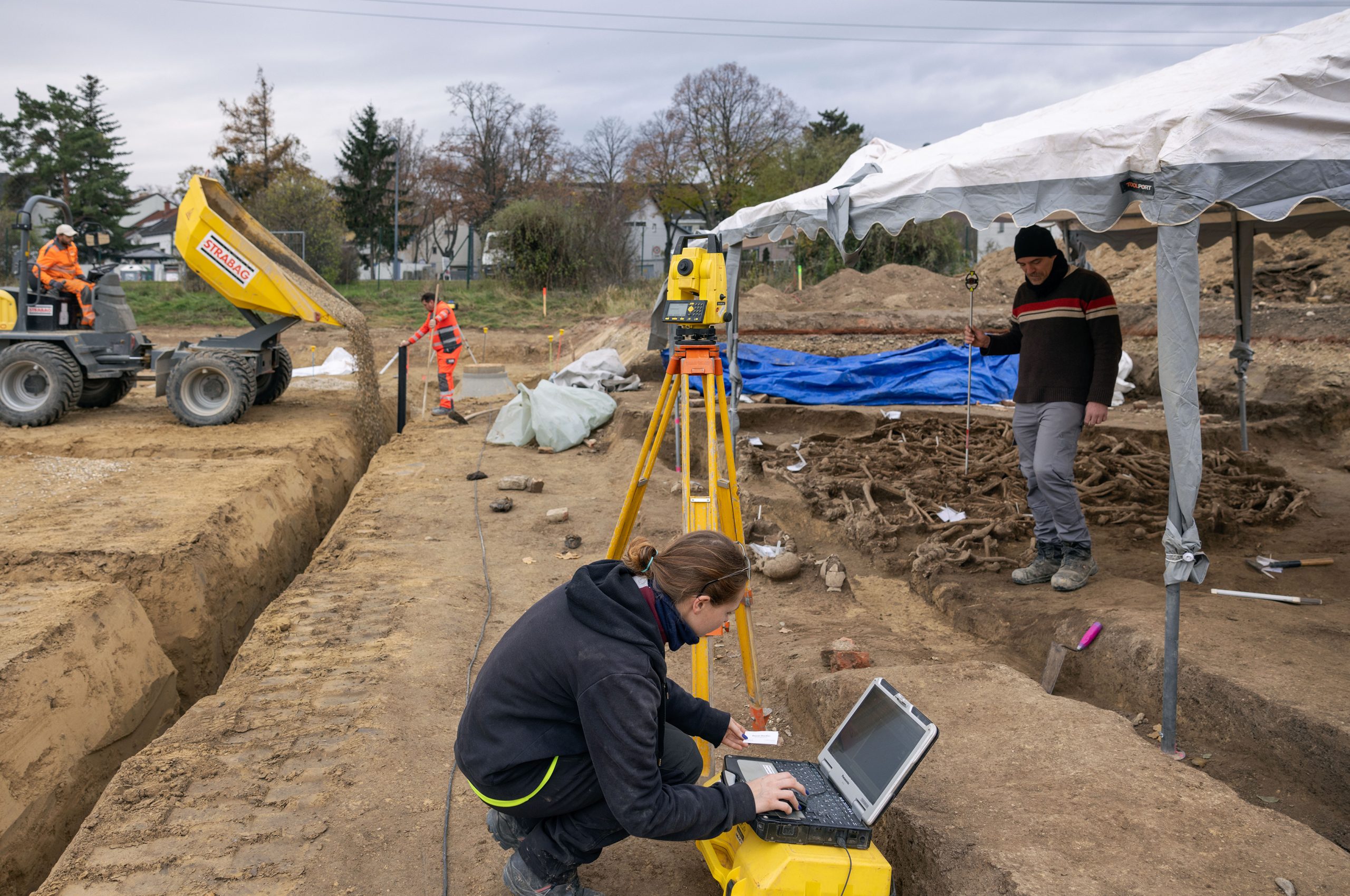Mass Grave from Roman Times Provides New Insights into the History of Vienna
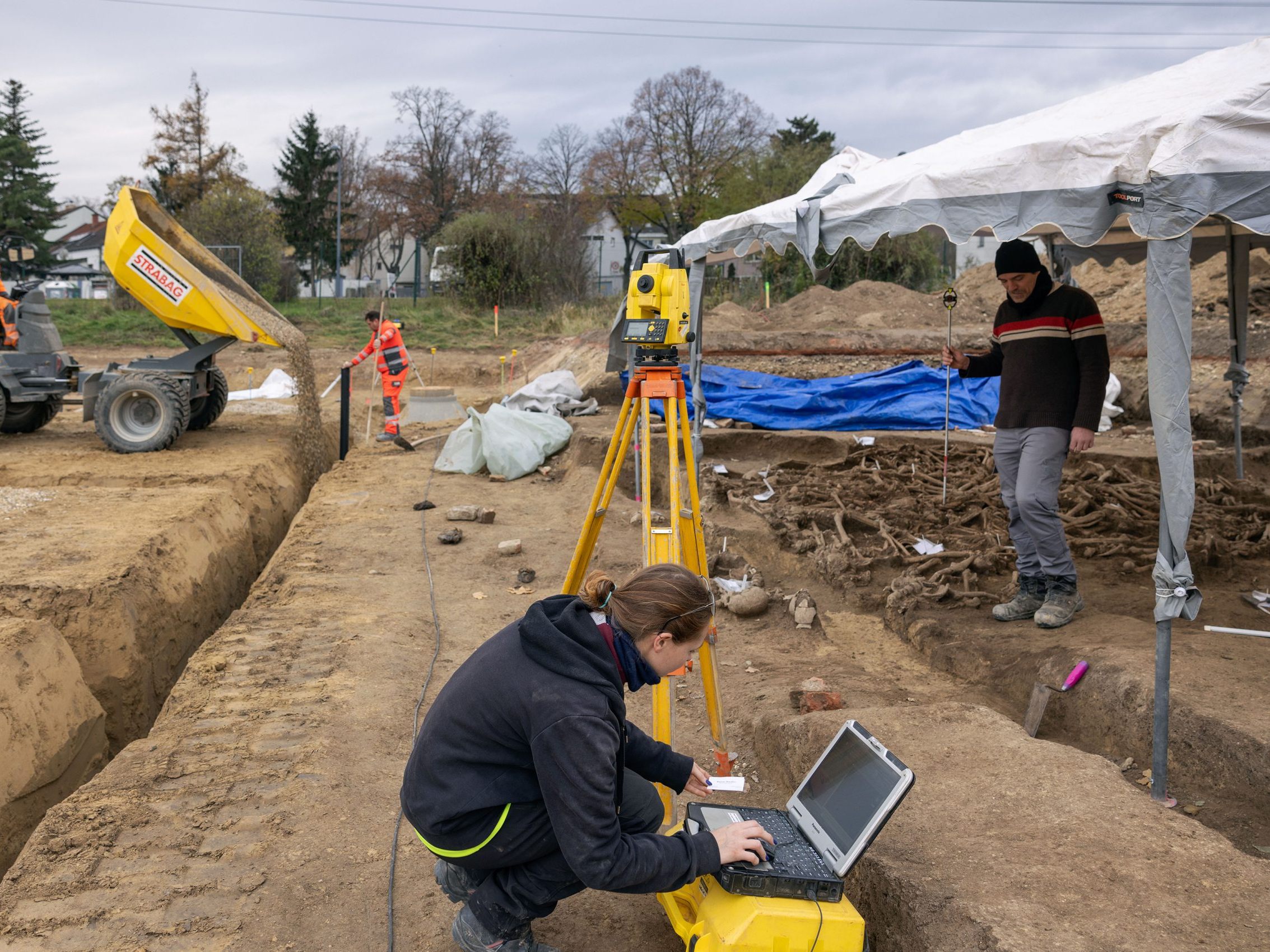
During the renovation of a sports field in Simmering, a mass grave was discovered in the fall - from Roman times, as it turned out to the surprise of those involved. The hastily buried remains of around 150 men indicate intense combat. The most likely time: the year 92 AD.
At that time, the Roman military camp Vindobona - where parts of Vienna's First District are located today - had not yet been expanded to the size seen in models, for example, at the Vienna Museum on Karlsplatz. Surprisingly, far beyond the gates of the base, which is considered the core of later urban development, new perspectives on the city's history were revealed following excavation work during the renovation of the "Ostbahn-XI" sports field on Hasenleitengasse in Simmering near the Central Cemetery, explained Vienna Museum Director Matti Bunzl and a number of experts.
In many ways a more astonishing and "creepy" find
"Simmering against Kapfenberg, that's what I call brutality" - this football-related saying, co-created by the legendary cabaret artist Helmut Qualtinger, comes to mind. However, what emerged at the end of October 2024 on the football field on the outskirts of the capital far exceeds the occurrences of a rustic match: The skeletons of the former soldiers all still show clearly visible combat injuries today, inflicted with projectile bolts and various cutting and stabbing weapons, according to archaeologist Michaela Kronberger from the Vienna Museum and the head of city archaeology Kristina Adler-Wölfl.
No one would have expected a Roman find there, especially since cremation was actually practiced at that time. Therefore, the conclusion is that the discovery situation suggests great haste and fear of further attacks among the hasty buriers, according to the experts. The scene that presented itself was quite eerie even around 2,000 years later, said Kronberger: She was "totally creeped out."
Young, healthy soldiers "slaughtered in the most gruesome way"
It should not be forgotten that the "incredible find" consists of the remains of mostly men aged between 20 and 30 in comparatively good general health, who were "slaughtered in the most gruesome way." Therefore, the recovery and processing must be carried out as respectfully as possible, said Binder.
For Martin Mosser of Vienna's city archaeology, the most likely reason for the outbreak of violence among the soldiers, who were equipped with the standard height of 1.70 meters for that time, lies in the "Danube Wars" under the Roman Emperor Domitian, whose reign lasted from 81 to 96. Not much is recorded about the battles, which were also marked by incursions from Germanic tribes beyond the border - the "Danube Limes." The emperor likely suppressed information about them.
Mass Grave Likely Related to "Danube Wars"
In a historical source, there is mention of the loss of an entire legion around the year 92 AD - albeit only in a single sentence, as Mosser explained. The newly discovered mass grave, which is unique for Central Europe, "is likely related to this." Such dramatic incidents could ultimately have led to the previously rather subordinate camp Vindobona being massively expanded under Emperor Trajan and becoming the seed for today's metropolis, according to experts.
Dagger Gave Clue to Roman Soldiers
The "Aha moment" that confirmed they were indeed dealing with Roman soldiers came when examining an X-ray of a dagger including its sheath - one of the few accompanying finds on site, as the deputy head of city archaeology, Christoph Öllerer, explained. The decorations of the heavily rusted artifact also clearly point to the late first century. In addition to the dagger, they found two spearheads, parts of a scale armor, shoe nails from the characteristic sandals, and a helmet flap, all of which "indicate a military context" and "look distinctly Roman," said Öllerer.
"A Thousand Research Questions" and Initial Exhibition Ideas
Initial scientific findings suggest that they are dealing with a "world-historical find," said Bunzl in a presentation marked by superlatives. They already have "a coherent picture of the formation of Vienna," which is likely to gain another twist and refinement through the mass grave, emphasized Science City Councillor Veronica Kaup-Hasler (SPÖ).
However, it will be a few months before the first major scientific publications appear, according to the researchers. A smaller exhibition - probably in the "Roman Museum" at the Hoher Markt - can be expected in about two years. Until then, DNA or isotope analyses are planned to provide information about the origin and diet of the soldiers. The find from Hasenleitengasse certainly opens up "a thousand research questions," which will now be organized and further developed together with domestic and international experts, said Binder.
(APA/Red)
This article has been automatically translated, read the original article here.






